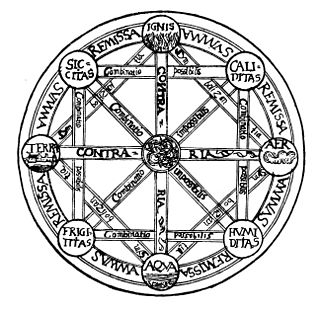
The classical elements typically refer to earth, water, air, fire, and (later) aether which were proposed to explain the nature and complexity of all matter in terms of simpler substances. Ancient cultures in Greece, Angola, Tibet, India, and Mali had similar lists which sometimes referred, in local languages, to "air" as "wind", and to "aether" as "space".
Air or Wind is one of the four classical elements along with water, earth and fire in ancient Greek philosophy and in Western alchemy.

Dungeon Magic: Sword of the Elements is a real-time first-person RPG produced by Taito in 1989, and programmed by Natsume for the Nintendo Entertainment System.

An elemental is a mythic supernatural being that is described in occult and alchemical works from around the time of the European Renaissance, and particularly elaborated in the 16th century works of Paracelsus. According to Paracelsus and his subsequent followers, there are four categories of elementals, which are gnomes, undines, sylphs, and salamanders. These correspond to the four Empedoclean elements of antiquity: earth, water, air, and fire, respectively. Terms employed for beings associated with alchemical elements vary by source and gloss.
A sylph is an air spirit stemming from the 16th-century works of Paracelsus, who describes sylphs as (invisible) beings of the air, his elementals of air. A significant number of subsequent literary and occult works have been inspired by Paracelsus's concept: Robert Alfred Vaughan noted that "the wild but poetical fantasies" of Paracelsus had probably exercised a larger influence over his age and the subsequent one than is generally supposed, particularly on the Rosicrucians, but that through the 18th century they had become reduced to "machinery for the playwright" and "opera figurantes with wings of gauze and spangles".

Mon Colle Knights, known in Japan as Six Gates Far Away Mon Colle Knight, is a Japanese manga series written by Satoru Akahori and Katsumi Hasegawa and illustrated by Hideaki Nishikawa. The original concept was made by Hitoshi Yasuda and Group SNE. The series is based on the Monster Collection trading card game.
Elementals is an American superhero comic book first published in 1984 and created by Bill Willingham, for which he was both writer and artist.
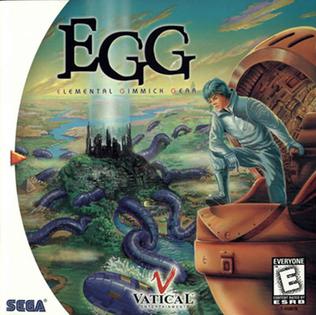
E.G.G.: Elemental Gimmick Gear is an action role-playing game for the Sega Dreamcast console. Elemental Gimmick Gear uses hand-drawn art in an overhead view during exploration, then switches to 3D graphics during boss battles. It was developed by Birthday and published by Hudson Soft in Japan and Vatical Entertainment in the United States.
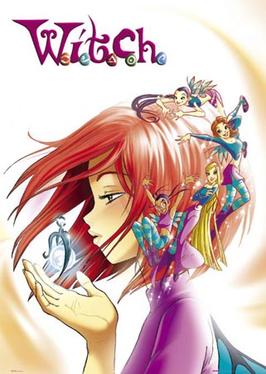
W.I.T.C.H. is an Italian fantasy Disney comics series created by Elisabetta Gnone, Alessandro Barbucci, and Barbara Canepa. The series features a group of five teenage girls who become the guardians of the classical elements of energy, water, fire, earth, and air, and protectors of the mythical Kandrakar, the center of the universe. The story follows them as they handle their new magical powers and responsibilities, as well as their lives as adolescents. The comics art style draws heavy inspiration from manga and its drawing conventions. The names of the five characters form the titular acronym, despite the characters not actually being witches.

Guardian Heroes is a 2D side-scrolling beat 'em up video game developed by Treasure and released by Sega in 1996 for the Sega Saturn video game console. The game resembles Final Fight or Golden Axe, but with RPG elements. The development team called it a "fighting RPG". A sequel was released in 2004 for the Game Boy Advance entitled Advance Guardian Heroes.

Death Gate is an adventure game loosely based on Margaret Weis and Tracy Hickman's fantasy book series The Death Gate Cycle. Legend Entertainment released it for MS-DOS compatible operating systems in 1994. It received several awards. The box cover is the painting that Keith Parkinson created for the third book, Fire Sea.

Zenki is a Japanese manga series written by Kikuhide Tani and illustrated by Yoshihiro Kuroiwa. It was introduced and serialized in the Shueisha publication, Monthly Shōnen Jump from December 1992 to September 1996. Zenki was adapted into a fifty-one episode anime television series in 1995 and a single original video animation in 1997 by Studio Deen and also received five video games. Enoki Films handles the English language version of the anime and its distribution rights.

Wrath Unleashed is a strategy game for the PlayStation 2 and the Xbox created by The Collective and published by LucasArts in 2004.
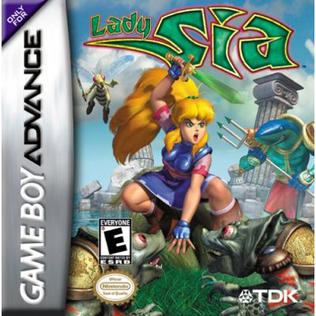
Lady Sia is a platform game with action-adventure elements made by RFX Interactive for the Game Boy Advance. It was published by TDK Mediactive, released in the USA on October 15, 2001, and released in Europe on October 19, 2001. Lady Sia is one of the few original games produced by RFX Interactive. The game takes place in a fantasy world where the player assumes the role of the She-Ra/Xena-esque warrior princess, Lady Sia. It is her task to defeat the T'soas, a race of creatures created by the evil warlock Onimen who has declared war on the other realms. Her quest leads her through four different realms, the last one being the home continent of the T'soas themselves. A sequel was planned for the GameCube and GBA in 2003 but was cancelled due to TDK Mediactive being purchased by Take-Two Interactive that same year.
Naiad is a character appearing in comics published by DC Comics. She first appeared in Firestorm, the Nuclear Man #90, during the four part Elemental War storyline that ran to issue #93, and was created by John Ostrander and Tom Mandrake.

Nekron is a supervillain appearing in comic books published by DC Comics, primarily as an enemy of the Green Lantern Corps. Created by Mike W. Barr, Len Wein and Joe Staton, the character, who exists as an embodiment of Death, first appeared in Tales of the Green Lantern Corps #2. He is the primary antagonist in the 2009-2010 Blackest Night storyline.

Earth, Air, Fire, and Water is an accessory for the 2nd edition of the Advanced Dungeons & Dragons fantasy role-playing game, published in 1993.
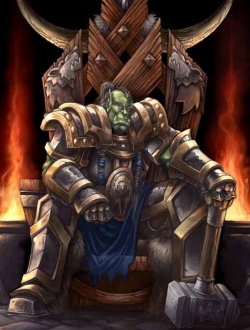
Thrall, born as Go'el, is a fictional character who appears in the Warcraft series of video games by Blizzard Entertainment. Within the series, Thrall is an orc shaman who served for a time as a Warchief of the Horde, one of the major factions of the Warcraft universe, as well as the leader of a shaman faction dedicated to preserving the balance between elemental forces in the world of Azeroth known as the Earthen Ring. Originally introduced in promotional material released by Blizzard Entertainment as the protagonist of the canceled video game Warcraft Adventures: Lord of the Clans, which was co-developed by Blizzard and Animation Magic from 1996 until 1998, Thrall's first proper appearance is in the 2001 novelization of the canceled video game's narrative authored by American novelist Christie Golden. The novel's story is set during his youth, where he is depicted as a slave who was raised by an abusive human military officer, but eventually rebelled and escaped captivity.














